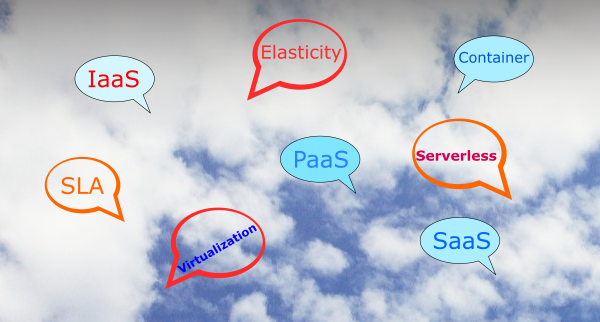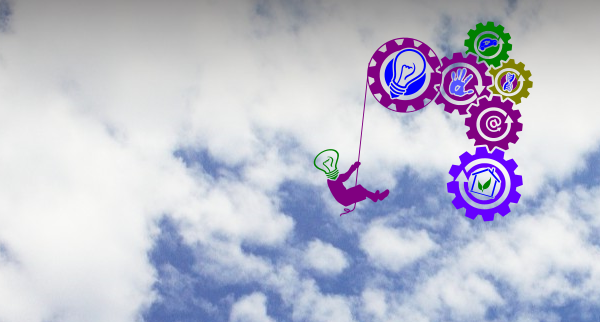Plugging the Leaky Bucket: A Technologist’s View of Ethio Telecom’s Proposed Privatization

Innovations as Catalysts for Growth
Technological innovation is one of the fundamental instruments of growth to help developing countries lift themselves out of poverty. In the context of economic developments over recent decades, technological innovations draw exemplary inspirations from the Four Asian Tigers (Hong Kong, Singapore, South Korea and Taiwan) due to the fact that these countries have demonstrated the power of technological innovations that led to prosperity with rapid industrialization (spanning from clothing, plastics to electronics).
Technological innovations present different opportunities at different times, and it is as if they have a life of their own. What worked for the Four Asian Tigers may not work at other places and times because the challenges with related numerous conditions are just different and change with time. In the context of recently developed economies (say, from 1960 onward), for instance, it would appear impossible to even contemplate replicating manufacturing of electronic components and devices elsewhere, as these are now like a given forte of the Four Tigers and those who strenuously followed suit with similar rapid development, notably China. In short, when manufacturing of electronic components presented an opportunity, those who positioned themselves effectively to ride the technological wave are now reaping the benefits.
Then was the Internet technologies and similar patterns followed as for previous significant innovations. For the Internet era the USA dominates the sector followed by China. The 14 largest Internet companies in the world are only from these two countries, with 10 from USA and 4 from China. Of course, it was never an easy path to success and for that we should remind ourselves of the dot-com bubble (or boom depending on your reference point) at the turn of this century.
Now Cloud Computing…
The Internet in itself is now a new engine for a proliferation of new and emerging technological innovations, so again innovations carry on with a life of their own in a rather subtle way. Among the many emerging technologies, one of the exciting innovations of the Internet era is Cloud Computing which is already upon us and expanding at a rapid pace.
In the context of developing countries, Cloud Computing and related Internet-based innovations offer ample new opportunities and toolkit that never existed with previous technological advances. For this reason, it is a subject area close to my heart because I strongly believe that the new computing services provide unique opportunities for developing countries that had never been a feature of previous technological advances. In the context of developing countries like Ethiopia, I have attempted to highlight the unique opportunities with at least two articles published on the LinkedIn professional network, and reproduced here on OROMIA TECH PLC.
- Cloud Computing Services as Emancipative Technologies (14 November 2018, Linked.Com);
- Cloud Based Technologies Present New Paradigms for Technology Transfer (25 November 2018, Linked.Com).
In very simplistic terms, Cloud Computing is basically an on-demand use of computing resources and paying only for a metered consumption, much like electricity or water supply. No capital investment would be required by end-users for expensive computers, storage systems or onsite IT infrastructure other than for relatively cheap terminal devices used to access cloud data centers over the internet.
As detailed in the above two articles, Cloud Computing has numerous desirable features that mitigate or even eliminate the challenges of technology transfer to developing countries, with chief among these briefly mentioned below.
- The on-demand use of services dispenses with prohibitive capital investments. Capital investment is the most important constraint for developing countries along with other factors such as lack of infrastructure and skills base.
- Because the IT infrastructure is now “in the cloud”, rather than on user premises, this would drastically minimize the skill base requirements for deployment, management and maintenance, thereby providing a new opportunity for focusing on skills training that matters the most—using the computing services for innovative solutions in business, education, health, transport and the like. In short, Cloud Computing streamlines the skills requirement by helping focus only on areas directly applicable to innovative solutions that are relevant to development activities.
- Unlike previous technologies and innovations, say, the electronics sector that propelled the growth of the Four Asian Tigers, or high investment manufacturing installations, there is no barrier to Cloud Computing technology beyond the Internet infrastructure for accessing the services anywhere and anytime.
- Cloud Computing offers numerous key features that can be leveraged to generate innovative businesses and maximize employment of skilled workforce and create the all needed synergy for capacity building of home grown businesses.
Technologist + Economist
As a technologist in the fields of telecommunications, electronics and computer science, development economics is one topical area that grabs my attention. Though not an economist by profession, I understand and appreciate the potential opportunities from technological innovation side of things. I often try to share my views from technology perspectives, for instance, trying to explore any new opportunities that emerging technologies can offer to the resource constrained developing countries as highlighted above. As important, I also try to learn and understand how business experts go about with their strategic decisions, from early research piloting to large scale developmental financing—something that is desperately needed in developing countries.
As luck would have it, I’ve had the privilege of knowing a good friend, Ayele Gelan, a research economist with many publications to his name in this area. To an economist and a technologist duo, both originating from the same developing country, technological innovations and economic growth are not merely distinct subject areas. We’ve had the opportunity to explore from both ends of the spectrum: what economic growth means to a technologist, and what technical innovations mean to an economist.
We often discuss, all-be-it in the hypothetical, on how policy makers should pay serious attention to these new and emerging technological advances in order to set on the road to rapid developments; almost a fixture as an on-going discussion at every opportunity. The meeting of the two domains—technological innovations and development economics—and blending of experiences have helped us with a more holistic approach to understanding the issues better. In the context of developing countries, one key phrase that features more often in our discussion is the Leaky Bucket which is also central to this article.
Plugging the Leaky Bucket
The Leaky Bucket metaphor is one that is widely used to describe the economic phenomenon dragging back developing countries in perpetual poverty. Most developing countries lose out on their earnings much like a leaky bucket loses most, if not all, of its content as it is carried along the way. That is, a country’s earnings are lost on the way before getting to the intended target (the citizens!).
Massive debt repayment, often based on unfair and punitive loan terms, is one good example of a leaky bucket as a capital flight out of a country. There are also various types of illicit capital flights, from very questionable import-export accounting practices to downright illegal ones such as black-market currency exchanges. Even foreign investments come with their inherent capital flights adding to the leaky bucket syndrome. While foreign investments can be key to financing developments, the question remains to what extent capital flight, in this case as legitimate repatriated profits, should be considered fair and sustainable for net incremental development that make a difference.
By now it should be clear to the reader where this discussion is leading. There are new opportunities in sight as highlighted above with new technological advances. Advisors and policy makers should work out viable developmental plans to tap into that illusive wave of innovation at the right time. And before it’s too late! For a long time, we have known the one scourge of economic development, tagged with the most memorable metaphor—the Leaky Bucket.
Plug the Leaky Bucket as much as possible! This naturally requires a multi-faceted approach as there are several multi-dimensional holes in that bucket. In this regard, we are now at an important juncture where we are able to do more with less than ever before as highlighted above.
While, to a great extent, the scale of capital flight may be minimized, say, with careful planning for more productive investments, adopting more economically viable policies, etc, it is possible for the whole effort to be undone with less transparent and corrupt business practices. Clearly, it is impossible to be exhaustive here with all illicit means of capital flights. For the purpose of this article, we will confine the topic, by way of some proposed solutions in the context of Ethiopia, to financial and the IT sectors particularly in the context of the impending privatizations.
Financial Sector Leaky Bucket
This is an area widely covered by Ayele Gelan with regard to the Ethiopia situation and I’m simply including this as a summary for completeness as it mirrors with the IT sector Leaky Bucket described below. Please refer to the following articles for details.
- “Genuine and Transparent Policies are Desperately Needed to Boost Remittance Inflows” – addresses how to boost the capital inflow to the country based on incentivized remittances;
- “Taming the Beast: Accepting the Parallel Market and Adopting a Dual Exchange Rate” – addresses how to mitigate the illicit capital flight out of Ethiopia due to black market currency exchange.
IT Sector Leaky Bucket
What about a Leaky Bucket vis-à-vis IT sector? Before answering this question, let me say that what I wanted to say in this article can be reduced to what is described under this subsection. The rest of the discussion is simply to outline the trends and highlight new opportunities for sound arguments in support of what is advocated here in relation to Ethio Telecom privatization.
The answer to the question just posed is, if the IT sector has to fall under foreign control, it would most likely be one big hole in that Leaky Bucket. While foreign direct investment (FDI) or part ownership by a foreign IT giant can (theoretically) be an important part of development financing, it would be too risky a proposition to suddenly sail (perhaps fall) into uncharted waters that will inherently open up a route for capital flight out of the country. While repatriated profits are all legitimate and reasonable (and nothing to worry about if reciprocated as with developed countries!), this would just be a start to widen that leaky hole.
Let’s discuss a case for plugging that hole for the IT sector with regard to Ethio Telecom privatization.
We Need to Talk About Ethio Telecom!
I am not against privatization; I am for it. I am not for protectionism either; I believe in the free market. It is all comes down the facts on the ground, the priorities, and choosing the more economically viable policies.
If Ethio Telecom has been running with 100% home-grown senior executives and workforce under public ownership, there are even more good reasons for this to continue under private ownership by leveraging the new ways of interacting with technological innovations. There are lots that can be done to minimize waste, raise domestic revenues, and increase employment.
What about the needed FDI? There is no reason why domestic shareholders (by forming private companies) cannot step into this role. They should be able to raise capital, if need be by borrowing in foreign currency (for essential imports such as infrastructure) on their own negotiated terms. If you think about it, this arrangement by its very nature will strive to minimize the leaky bucket. Most importantly, this is the only way to break out of perpetual dependence.
Reading Jonathan Glennie’s book, “The Trouble with Aid: Why Less Could Mean More for Africa“, was an eye-opener for me. Glennie takes you on a journey to outline the many very harmful effects of aid, and convincingly leads you to what most of us perceive as counter-intuitive: that aid can actually set back country’s development rather than help it. I shall leave you in suspense as to the numerous interesting reasons but it would suffice to say that the important message here is aid dependency for most developing countries can be like an entrapment that is difficult to get out of. I recommend that you refer to Glennie’s book just cited for underlining reasons that support this argument.
FDI linked to privatization could be another entrapment if not much worse for its instruments of control by financiers. Perhaps the immediate concern and anxiety by many may not be that analytical; it’s just that Ethio Telecom is too big and valuable for a country to be subjected to high risk. It’s a valid concern as first-level reaction, and arising from the same root cause of the issues just explored. When the answer is not aid, but better aid, we should draw that lesson and say not foreign investment, but optimal mix of better foreign investment and domestic, and run with local shareholding companies.
It’s only this way that we can build our capacity, our self-confidence and avoid that perpetual entrapment. That is the only way to break out of dependence. That is the only way the so many skilled graduates in the wider fields of information technology can be productive with improved employment as well as self-employment prospects. The good news is that emerging technologies offer many mechanisms to make this worthwhile endeavor less daunting.
Ethio Telecom should choose a clear path of its independence, minimal capital flight, more innovative business and employment opportunities for the abundant workforce the country has produced over the years. There has never been a better time for demonstrating that self-confidence and reach for higher goals!
☀☀☀
© 2019 Demessie Girma.

































